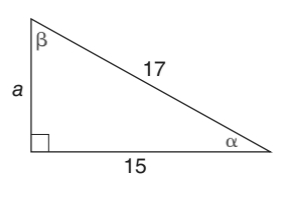Area between 10 - domain 0.5 1.0 1.5 2.0 area between domain. Area between 1 —x2 area between domain. Title: C11 Notes Key.pdf Author: sean.mcconnell Created Date. The area between the curves is going to be this area right here, this area and that area.0306. However, from a to c, it is f that is on top and it is g that is lower.0319. But from c all the way to b, now I have g is on top and f is the one that is lower,0328. Where we find the area by taking the upper function - the lower function.0336.
- 11.1 Area Between Curves Ap Calculus 14th Edition
- 11.1 Area Between Curves Ap Calculus Calculator
- 11.1 Area Between Curves Ap Calculus Algebra
- 11.1 Area Between Curves Ap Calculus Formulas
While much more can be said about sequences, we now turn to ourprincipal interest, series. Recall that a series, roughly speaking, isthe sum of a sequence: if $ds{a_n}_{n=0}^infty$ is a sequence then theassociated series is$$sum_{i=0}^infty a_n=a_0+a_1+a_2+cdots$$Associated with a series is a second sequence, called the sequence of partial sums $ds{s_n}_{n=0}^infty$:$$s_n=sum_{i=0}^n a_i.$$So$$s_0=a_0,quad s_1=a_0+a_1,quad s_2=a_0+a_1+a_2,quad ldots$$A series converges if the sequence of partial sums converges, and otherwise the series diverges.
Example 11.2.1 If $ds a_n=kx^n$, $dssum_{n=0}^infty a_n$ is called a geometric series.A typical partial sum is$$s_n=k+kx+kx^2+kx^3+cdots+kx^n=k(1+x+x^2+x^3+cdots+x^n).$$We note that$$eqalign{ s_n(1-x)&=k(1+x+x^2+x^3+cdots+x^n)(1-x)cr &=k(1+x+x^2+x^3+cdots+x^n)1-k(1+x+x^2+x^3+cdots+x^{n-1}+x^n)xcr &=k(1+x+x^2+x^3+cdots+x^n-x-x^2-x^3-cdots-x^n-x^{n+1})cr &=k(1-x^{n+1})cr}$$so$$eqalign{ s_n(1-x)&=k(1-x^{n+1})cr s_n&=k{1-x^{n+1}over 1-x}.cr}$$If $|x|< 1$, $dslim_{ntoinfty}x^n=0$ so$$ lim_{ntoinfty}s_n=lim_{ntoinfty}k{1-x^{n+1}over 1-x}= k{1over 1-x}.$$ Thus, when $|x|< 1$ the geometric series converges to $k/(1-x)$. When, for example, $k=1$ and $x=1/2$:$$ s_n={1-(1/2)^{n+1}over 1-1/2}={2^{n+1}-1over 2^n}=2-{1over 2^n} quadhbox{and}quad sum_{n=0}^infty {1over 2^n} = {1over 1-1/2} = 2.$$We began the chapter with the series$$sum_{n=1}^infty {1over 2^n},$$namely, the geometric series without the first term $1$. Each partialsum of this series is 1 less than the corresponding partial sum for the geometric series, so of course the limit is also one less than thevalue of the geometric series, that is,$$sum_{n=1}^infty {1over 2^n}=1.$$
It is not hard to see that the following theorem follows fromtheorem 11.1.2.
Theorem 11.2.2 Suppose that $sum a_n$ and $sum b_n$ are convergent series,and $c$ is a constant. Then
1. $dssum ca_n$ is convergent and $dssum ca_n=csum a_n$ Vreveal 3 premium keygen generator mac.
2. $dssum (a_n+b_n)$ is convergent and $dssum (a_n+b_n)=sum a_n+sum b_n$.
The two parts of this theorem are subtly different. Suppose that $suma_n$ diverges; does $sum ca_n$ also diverge if $c$ is non-zero? Yes:suppose instead that $sum ca_n$ converges; then by the theorem, $sum(1/c)ca_n$ converges, but this is the same as $sum a_n$, which byassumption diverges. Hence $sum ca_n$ also diverges. Note that we areapplying the theorem with $a_n$ replaced by $ca_n$ and $c$ replaced by$(1/c)$.

11.1 Area Between Curves Ap Calculus 14th Edition
Now suppose that $sum a_n$ and $sum b_n$ diverge; does$sum (a_n+b_n)$ also diverge? Now the answer is no: Let $a_n=1$ and$b_n=-1$, so certainly $sum a_n$ and $sum b_n$ diverge. But$sum (a_n+b_n)=sum(1+-1)=sum 0 = 0$. Of course, sometimes $sum (a_n+b_n)$ will also diverge, for example, if $a_n=b_n=1$, then$sum (a_n+b_n)=sum(1+1)=sum 2$ diverges.
11.1 Area Between Curves Ap Calculus Calculator


In general, the sequence of partial sums $ds s_n$ is harder to understandand analyze than the sequence of terms $ds a_n$, and it is difficultto determine whether series converge and if so to what. Sometimesthings are relatively simple, starting with the following.
Theorem 11.2.3 If $sum a_n$ converges then $dslim_{ntoinfty}a_n=0$.
Proof.
Since $sum a_n$ converges, $dslim_{ntoinfty}s_n=L$ and $dslim_{ntoinfty}s_{n-1}=L$, because this really says the samething but 'renumbers' the terms. Bytheorem 11.1.2, $$ lim_{ntoinfty} (s_{n}-s_{n-1})= lim_{ntoinfty} s_{n}-lim_{ntoinfty}s_{n-1}=L-L=0.$$But$$ s_{n}-s_{n-1}=(a_0+a_1+a_2+cdots+a_n)-(a_0+a_1+a_2+cdots+a_{n-1}) =a_n,$$so as desired $dslim_{ntoinfty}a_n=0$.
This theorem presents an easy divergence test: if given a series $suma_n$ the limit $dslim_{ntoinfty}a_n$ does not exist or has a valueother than zero, the series diverges. Note well that the converse isnot true: If $dslim_{ntoinfty}a_n=0$ then the series doesnot necessarily converge.
Example 11.2.4 Show that $dssum_{n=1}^infty {nover n+1}$ diverges.
We compute the limit:$$lim _{ntoinfty}{nover n+1}=1not=0.$$Looking at the first few terms perhaps makes it clear that the serieshas no chance of converging:$${1over2}+{2over3}+{3over4}+{4over5}+cdots$$will just get larger and larger; indeed, after a bit longer the seriesstarts to look very much like $cdots+1+1+1+1+cdots$, and of courseif we add up enough 1's we can make the sum as large as we desire.
Example 11.2.5 Show that $dssum_{n=1}^infty {1over n}$ diverges.
Here the theorem does not apply: $dslim _{ntoinfty} 1/n=0$, so itlooks like perhaps the series converges. Indeed, if you have thefortitude (or the software) to add up the first 1000 terms you will find that$$sum_{n=1}^{1000} {1over n}approx 7.49,$$so it might be reasonable to speculate that the series converges tosomething in the neighborhood of 10. But in fact the partial sums do goto infinity; they just get big very, very slowly. Consider thefollowing:
$ds 1+{1over 2}+{1over 3}+{1over 4} > 1+{1over 2}+{1over 4}+{1over 4} = 1+{1over 2}+{1over 2}$
$ds 1+{1over 2}+{1over 3}+{1over 4}+{1over 5}+{1over 6}+{1over 7}+{1over 8} > 1+{1over 2}+{1over 4}+{1over 4}+{1over 8}+{1over 8}+{1over 8}+{1over 8} = 1+{1over 2}+{1over 2}+{1over 2}$
$ds 1+{1over 2}+{1over 3}+cdots+{1over16}>1+{1over 2}+{1over 4}+{1over 4}+{1over 8}+cdots+{1over 8}+{1over16}+cdots +{1over16} =1+{1over 2}+{1over 2}+{1over 2}+{1over 2}$
and so on. By swallowing up more and more terms we can always manageto add at least another $1/2$ to the sum, and by adding enough ofthese we can make the partial sums as big as we like. In fact, it'snot hard to see from this pattern that$$1+{1over 2}+{1over 3}+cdots+{1over 2^n} > 1+{nover 2},$$so to make sure the sum is over 100, for example, we'd addup terms until we get to around $ds 1/2^{198}$, that is,about $ds 4cdot 10^{59}$ terms. This series, $sum (1/n)$, is called theharmonic series.
Exercises 11.2
Ex 11.2.1Explain why $dssum_{n=1}^infty {n^2over 2n^2+1}$diverges.(answer)
11.1 Area Between Curves Ap Calculus Algebra
Ex 11.2.2Explain why $dssum_{n=1}^infty {5over 2^{1/n}+14}$diverges.(answer) Dmg cs go.
Ex 11.2.3Explain why $dssum_{n=1}^infty {3over n}$diverges.(answer)
Ex 11.2.4Compute $dssum_{n=0}^infty {4over (-3)^n}- {3over 3^n}$. (answer)
Ex 11.2.5Compute $dssum_{n=0}^infty {3over 2^n}+ {4over 5^n}$. (answer)
Ex 11.2.6Compute $dssum_{n=0}^infty {4^{n+1}over 5^n}$.(answer)
Ex 11.2.7Compute $dssum_{n=0}^infty {3^{n+1}over 7^{n+1}}$.(answer)
Ex 11.2.8Compute $dssum_{n=1}^infty left({3over 5}right)^n$.(answer) Mac cosmetics makeup bag.
11.1 Area Between Curves Ap Calculus Formulas
Ex 11.2.9Compute $dssum_{n=1}^infty {3^nover 5^{n+1}}$.(answer)
